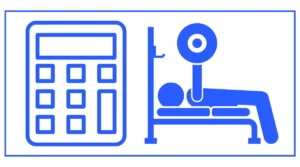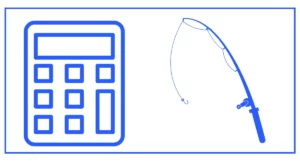Ape Index Calculator
The ape index calculator helps you calculate your ape index (Also known as the ape factor or gorilla index).
Enter your height and wingspan in cm to determine your ape index.
Your ape index is your wingspan (arm span) compared to your height. Most people's wingspan equals their height, making them neutral ape indexes.

Long arms for your height are an advantage in rock climbing, swimming, boxing, and basketball; hence the ape index is measured.
What is the Ape Index?
The ape index, sometimes referred to as the "gorilla index," is a numerical representation of how an individual's arm span compares to their height. It's expressed either as a ratio or as a difference in units of measurement (usually centimeters or inches). The term "ape index" comes from the observation that many non-human primates, such as gorillas and chimpanzees, have arm spans significantly longer than their height.
In humans, the ape index describes the ratio of an individual's arm span relative to their height. This concept has roots in art and anatomy, famously depicted in Leonardo da Vinci's Vitruvian Man, which illustrated the idea that a person's arm span is typically equal to their height.
How to Calculate Your Ape Index
There are two primary methods to calculate your ape index: the division method and the subtraction method. Both require accurate measurements of your height and arm span.
The Division Method
- Measure your height in centimeters or inches.
- Measure your arm span (wingspan) in the same unit as your height.
- Divide your wingspan by your height.
The resulting number is your ape index. If it's greater than 1, you have a positive ape index. If it's less than 1, you have a negative ape index. If it's exactly 1, you have a neutral ape index.
The Subtraction Method
- Measure your height in centimeters or inches.
- Measure your arm span (wingspan) in the same unit as your height.
- Subtract your height from your wingspan.
The resulting number (positive or negative) is your ape index expressed as a difference. A positive number indicates a positive ape index, while a negative number indicates a negative ape index.
Using the Ape Index Calculator
To simplify the process of calculating your ape index, you can use an ape index calculator. This tool takes your height and wingspan measurements as inputs and quickly computes your ape index. Here's how to use the ape index calculator effectively:
- Measure your height accurately, preferably with assistance from another person.
- Measure your wingspan from fingertip to fingertip with your arms outstretched.
- Enter these measurements into the calculator.
- Click the "Calculate" button to get your ape index.
The calculator will typically provide your ape index as both a ratio and a difference, giving you a comprehensive understanding of your measurements.
Interpreting Your Ape Index
Once you've calculated your ape index, you might wonder what it means. Here's a breakdown of different ape index results:
Positive Ape Index
If your ape index is greater than 1 (using the division method) or a positive number (using the subtraction method), you have a positive ape index. This means your arm span exceeds your height. Many climbers and athletes in certain sports consider a positive ape index advantageous.
Neutral Ape Index
If your ape index is exactly 1 or 0 (depending on the calculation method), you have a neutral ape index. This indicates that your arm span is equal to your height, which is considered the average for humans.
Negative Ape Index
A negative ape index occurs when your arm span is shorter than your height. While this might seem disadvantageous in some sports, it's important to remember that the ape index is just one of many factors that contribute to athletic performance.
The Significance of Ape Index in Different Sports
While the ape index is most commonly discussed in climbing circles, it can be relevant in various sports and activities. Let's explore its significance in different contexts:
Climbing and Bouldering
In the world of climbing, a higher ape index is often seen as advantageous. Climbers with longer arms relative to their height may have an easier time reaching distant holds or making long moves. However, it's crucial to note that climbing ability depends on numerous factors, including technique, strength, flexibility, and problem-solving skills.
Many professional climbers have positive ape indices, but this isn't a rule. For example, some successful climbers have neutral or even slightly negative ape indices, proving that technique and training can overcome any perceived disadvantages in body proportions.
Basketball
In basketball, a sport where reach is crucial, players with a high ape index often have an advantage. A greater wingspan can help with blocking shots, rebounding, and reaching for passes. Many successful basketball players are known for having wingspans significantly greater than their height.
Swimming
Swimmers with a higher ape index may have an advantage in certain strokes, particularly those that rely heavily on arm movement like freestyle and butterfly. Longer arms can potentially provide a longer stroke and more propulsion through the water.
Boxing and Combat Sports
In combat sports, reach is a critical factor. Fighters with a positive ape index often have a reach advantage over their opponents, allowing them to strike from a safer distance. However, fighters with shorter reaches can develop strategies to overcome this disadvantage.
Goalkeeping
In sports like soccer and handball, goalkeepers with a high ape index may have an advantage. Longer arms can help cover more of the goal area, potentially making it easier to make saves.
Limitations and Considerations
While the ape index can provide interesting insights, it's important to consider its limitations:
- It's just one measurement: Athletic performance depends on numerous factors, including strength, skill, technique, and mental attributes.
- It's not trainable: Unlike strength or flexibility, your ape index is determined by your skeletal structure and isn't something you can change through training.
- Different sports value different body types: What's advantageous in one sport might not be in another.
- Individual variations: Two people with the same ape index might have very different body compositions and athletic abilities.
Measuring Your Ape Index Accurately
To get an accurate ape index, it's crucial to measure your height and wingspan correctly. Here's how to do it:
Measuring Height
- Stand against a wall with your feet flat on the ground, heels touching the wall.
- Keep your head straight, looking forward.
- Place a flat object (like a book) on top of your head, ensuring it's level.
- Mark where the bottom of the object touches the wall.
- Measure from the floor to this mark.
Measuring Wingspan
- Stand with your back against a wall, arms outstretched to form a T-shape.
- Ensure your fingertips are touching the wall.
- Mark where the tip of your middle finger touches the wall on both sides.
- Measure the distance between these two marks.
For the most accurate results, have someone assist you with these measurements.
Frequently Asked Questions
Is a higher ape index always better?
Not necessarily. While a higher ape index can be advantageous in certain sports, it's just one of many factors that contribute to athletic performance. Success in any sport requires a combination of physical attributes, skills, and mental factors.
Can I improve my ape index through training?
No, your ape index is determined by your skeletal structure and cannot be changed through training. However, you can improve other aspects of your physical fitness that may compensate for or complement your natural proportions.
How does ape index affect climbing performance?
A positive ape index can potentially help climbers reach further between holds. However, climbing performance depends on many factors, including technique, strength, flexibility, and problem-solving skills. Many successful climbers have neutral or even slightly negative ape indices.
Are there any disadvantages to having a high ape index?
In some contexts, a very high ape index might present challenges. For example, in weightlifting, individuals with very long arms might find certain lifts more challenging due to the increased range of motion required.
How does ape index relate to other body measurements?
The ape index is just one of many body measurements used in sports and fitness. Other relevant measurements might include body fat percentage, muscle mass, and specific limb lengths. The importance of each measurement varies depending on the sport or activity.





